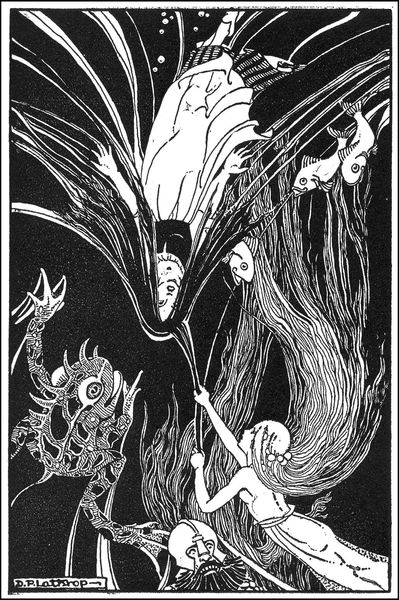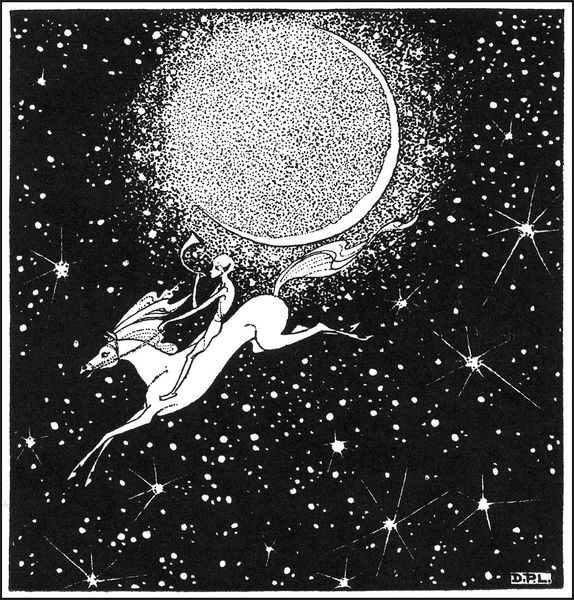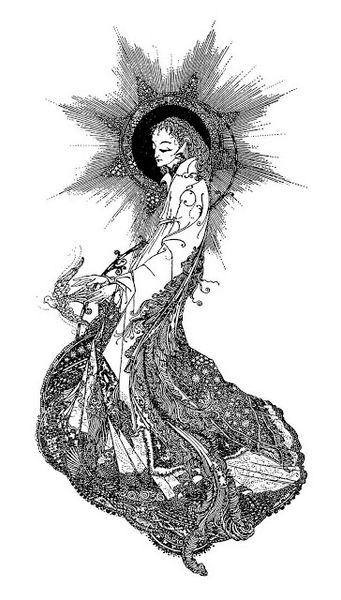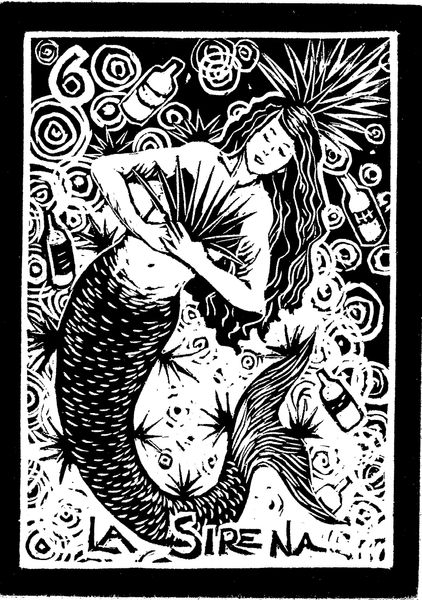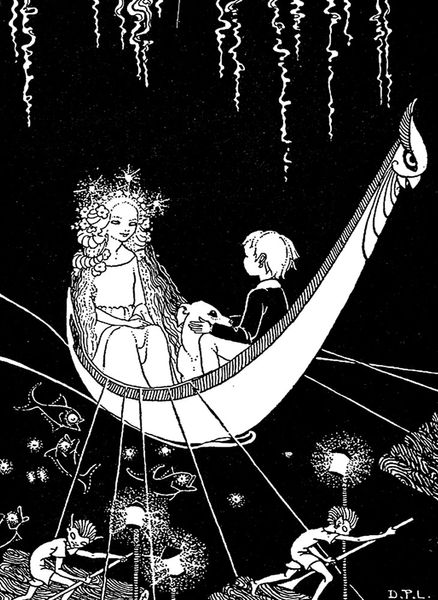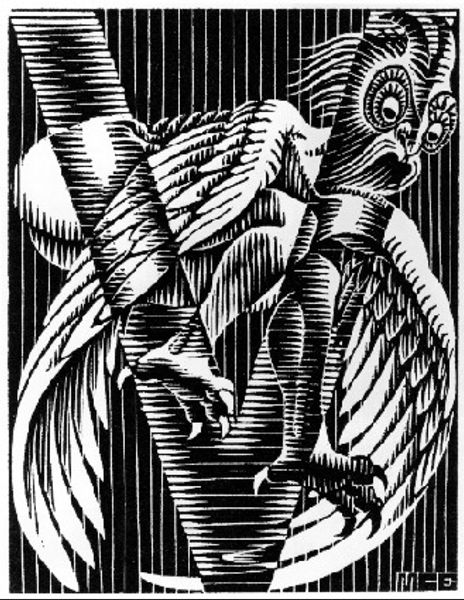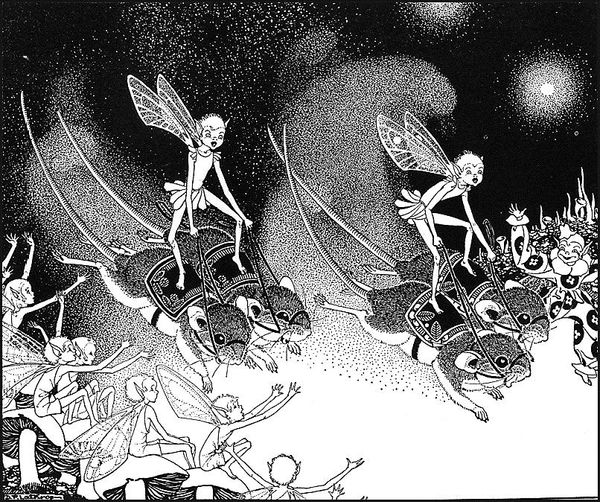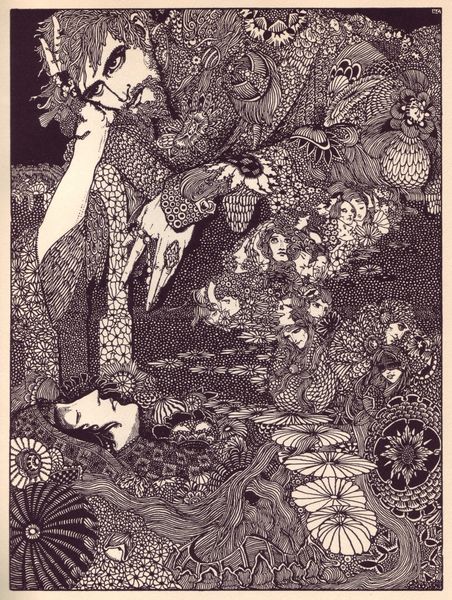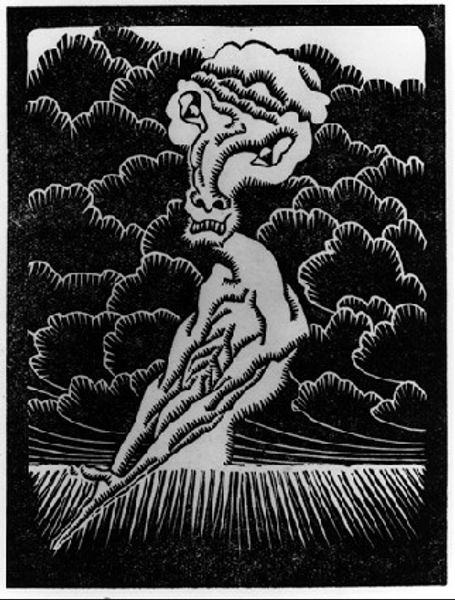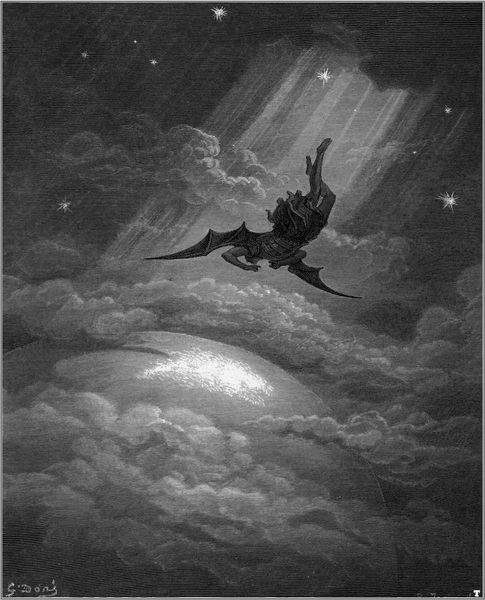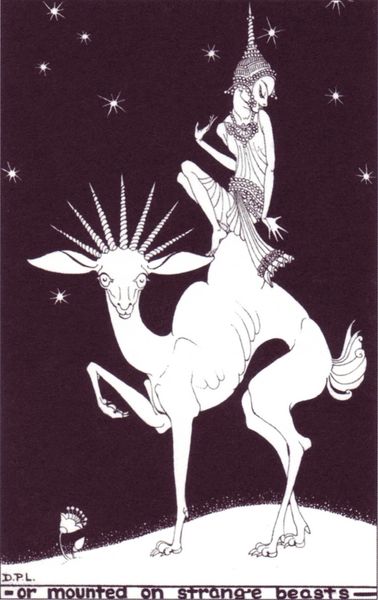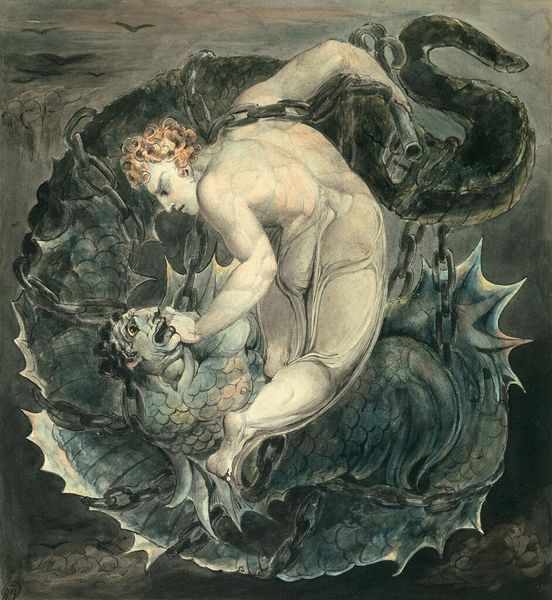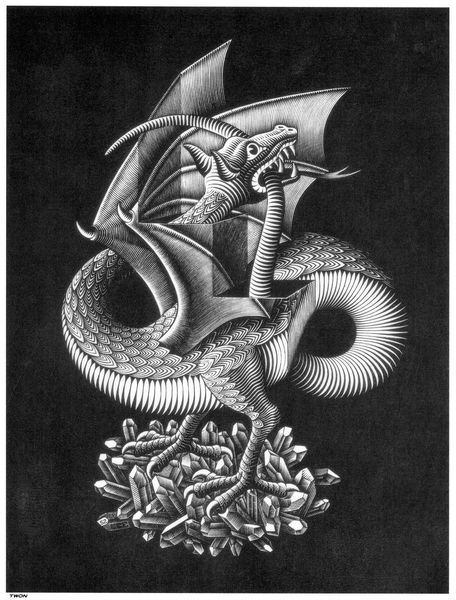
Copyright: Public domain US
Editor: This drawing is "Mopsa the Fairy," illustrated in 1920 by Dorothy Lathrop using ink on paper. It’s strikingly whimsical and very much reminds me of illustrations you'd see in older storybooks. What stands out to you about the materials and production here? Curator: I notice that the artist elected to use stark black ink on a seemingly delicate paper support. Consider the socio-economic climate of 1920; there might have been constraints in resources or a deliberate choice to use inexpensive materials, democratizing the image-making process, and bringing art closer to mass production. Editor: That’s fascinating! I hadn’t considered that. How does the medium influence the message, do you think? Curator: Ink allows for crisp lines and high contrast, ideal for reproduction in books. Mass production relies heavily on distinct graphic elements; the artist is keenly aware of their audience here. Furthermore, it allowed for wider distribution, taking fairy imagery and narratives beyond elite circles to wider, and especially younger, audiences. This challenges the established hierarchy of art, bridging “high art” illustration. What do you think? Editor: It's almost like Lathrop’s illustration highlights the growing accessibility of art and media in that period. It uses fantastical subject matter, yet democratizes the means by which that imagery is presented to the audience. It suggests fairy tales are not just for the wealthy. Curator: Precisely. Looking at how Lathrop skillfully navigated those socio-economic parameters of art making broadens the message of art, itself. Editor: This definitely has me seeing fairy tales in a new, less-exclusive light. Thanks!
Comments
No comments
Be the first to comment and join the conversation on the ultimate creative platform.
